- Type of Hakhshara
- Middle Hakhshara (Mi-Ha), Religious Hakhshara
- Founded
- circa 1933
- Opened
- 1934/1935
- Closed
- May 1942
- Operating Area
-
20 hectareca. 5 ha for agricultural use, 15 ha gardens
- Areas of Training Offered
-
horticulture, home economics, agriculture, animal husbandryGardening (fruit, vegetables, asparagus, flowers); livestock farming (cattle, goats, horses); poultry farming (chickens), home economics (cooking and baking courses); dairy production; arable farming (grain, potatoes, root vegetables)
- Description
-
In December 1933, the Jewish lawyer Dr. Hans A. Meyer of Berlin purchased the property which would become a Hakhshara agricultural training center. It is not known if the later use of the property had already been planned. The lease agreement with the Reich Representation of German Jews was presumably concluded in 1934. The center was run by Bachad, the umbrella organization of religious halutzim (pioneers) in Germany. The new address was now Landwerk Steckelsdorf-Ausbau, Post Rathenower Land. Beginning in May 1935, 17 adolescents between 14 and 15, 13 boys and four girls, received instruction under the direction of Sigmar Bromberger and Manfred and Schoschana Litten in a Jewish-religious setting. The camp facilities included a farmhouse which also housed the apartments for the director and the gardener, as well as the rooms for the girls. Besides the farmhouse, stables for the cows and the horses, sheds for the tools and equipment and a barn completed the actual homestead. The boys were housed in the so-called summer villa. The facilities also included a greenhouse, manure beds and a chicken coop. The property was surrounded by fruit orchards, vegetable and grain fields and a pine forest.
The boys’ training concentrated on learning all facets of agricultural work, from sowing to harvesting. The girls each received a half year of home economics education. For another half year, they were trained in poultry farming and milking. Some of the vegetables and flowers were sold. A trader from the wholesale market at Alexanderplatz bought the goods. Three to four hours a day were devoted to the acquiring and deepening of Jewish and general knowledge. As a religious training center, special emphasis was placed on this part of the training. Most of the boys had apparently already attended a yeshiva and had the relevant prior knowledge. The later director Dr. Abrahamson was held in great esteem. He was extremely knowledgeable about Judaism and impressed the young people with his calm, convincing manner. In addition to Yiddish literature, including Scholem Alejchem or Itzhok Leijb Perez, he introduced the pupils to Arnold Zweig, Franz Kafka, Heinrich Heine and Kurt Tucholsky. However, sports were also not neglected. Here, particularly Herbert Schönewald, who came to Steckelsdorf as the successor to Dr. Abrahamson, let the boys and girls play sports together. He was very popular with the pupils, who could come to him with all their questions and problems.
Already in May 1936, Steckelsdorf was considered to be completely full. Now around 70 young people were living at the facility. When the individual teachers, teaching assistants and gardeners worked in Steckelsdorf can only be retraced in some cases. Starting on April 26, 1937, the agriculturist Friedrich Löwenthal was working as head gardener in Steckelsdorf. Some of the pupils later remembered how they enjoyed working with and learning from him. Ernst (Mosche) Gillis came to Steckelsdorf on December 9, 1937. He left Germany for Palestine on a student visa at the age of 15. About his time in Steckelsdorf he wrote: “Steckelsdorf was the best time for me in Germany. We lived there like in a small, Jewish autonomy and didn’t have to suffer every day from the Nazi regime like in Beuthen or Frankfurt. Still, even Steckelsdorf was only partially safe.”
As in other places all over Germany, on October 28, 1938, the young Jewish boys and girls with Polish citizenship were taken and deported to Poland. November 9, 1938 was equally dramatic. The arrests and deportations began already in the morning hours. The agricultural training center was attacked and plundered that evening. All male directors and men in charge were arrested and later taken to Buchenwald. Along with Friedrich Löwenthal, this meant the managing director Hofbauer, Herbert Schönewald and Simon Berlinger. Every window pane was shattered in the attack, resulting in damages of 1,000 Marks which was charged to the Reich Representation of Jews in Germany. The training center was shut down.
By the middle of November, all of the pupils had left the training center. Since the Nazis were interested in a continued running of the center, Steckelsdork was reactivated. In early 1939, the Reich Association of Jews in Germany tried to operate the center again as a Hakhshara camp, which, after a lengthy dispute mainly about the lease payment, they were able to do. In November 1939, 53 young people were registered in Steckelsdorf, 26 of whom were female. In December 1939, Ezra Ben Gershôm (born as Ezra Feinberg) came to Steckelsdorf for training as a 17-year-old. The average age of the pupils living in Steckelsdorf in 1939 was 18. However, there was also a small group of 25-30- year-olds. From the fall of 1940, the young residents were increasingly forced to work outside of the training center. They had to work in road construction, in agriculture, but also in the arms industry. Many were conscripted to work in Rathenow’s optical industry, and in a garden center and tree nursery in Neue Schleuse (today Rathenow West).
At the end of 1940 or the beginning of 1941, Kurt Silberpfennig arrived in Steckelsdorf initially as deputy pedagogical director. In 1941, the center gained in increasing importance as a last refuge, also for older Jews. The number of residents rose to over 100 during this period. The October 1941 ban prohibiting Jews from emigrating from Germany had drastic consequences. Now the chaverim in Steckelsdorf had no way to leave Germany. Life became increasingly difficult for the residents. They barely had any time to take care of their own farm, as in the spring of 1942, their consignment of forced labor increased to 11 and later even to 12 hours a day. In addition, they had to travel long distances, so that a 14-15-hour day was the rule. On May 21, 1942, a letter arrived in Steckelsdorf, announcing its dramatic end. The residents were ordered to be ready to “resettle” in three days. Three days later, the Hakhshara center in Steckelsdorf was officially shut down. A group of 15 people who were working in the optical industry and the core workforce of the center remained. The center now served as a labor camp.
It is not known where the former halutzim were deported to. Only four days after the deportation on May 28, 1942, the Chief Finance President of Berlin filed an application to register the German Reich as owner of the properties of the agricultural training center in Steckelsdorf, which duly occurred already on June 15, 1942. On February 26, 1943, the camp was finally closed and the last Jewish residents deported. In 1944, a couple named Fehmann acquired the property and set up a pharmaceutical factory on it. In 1953, the summer villa of the former center was turned into a children’s home, which it is still used as today. Since 1997, a memorial plaque at the entrance to the residential building has commemorated the fact that a Hakhshara camp was located here from 1934 to 1942.
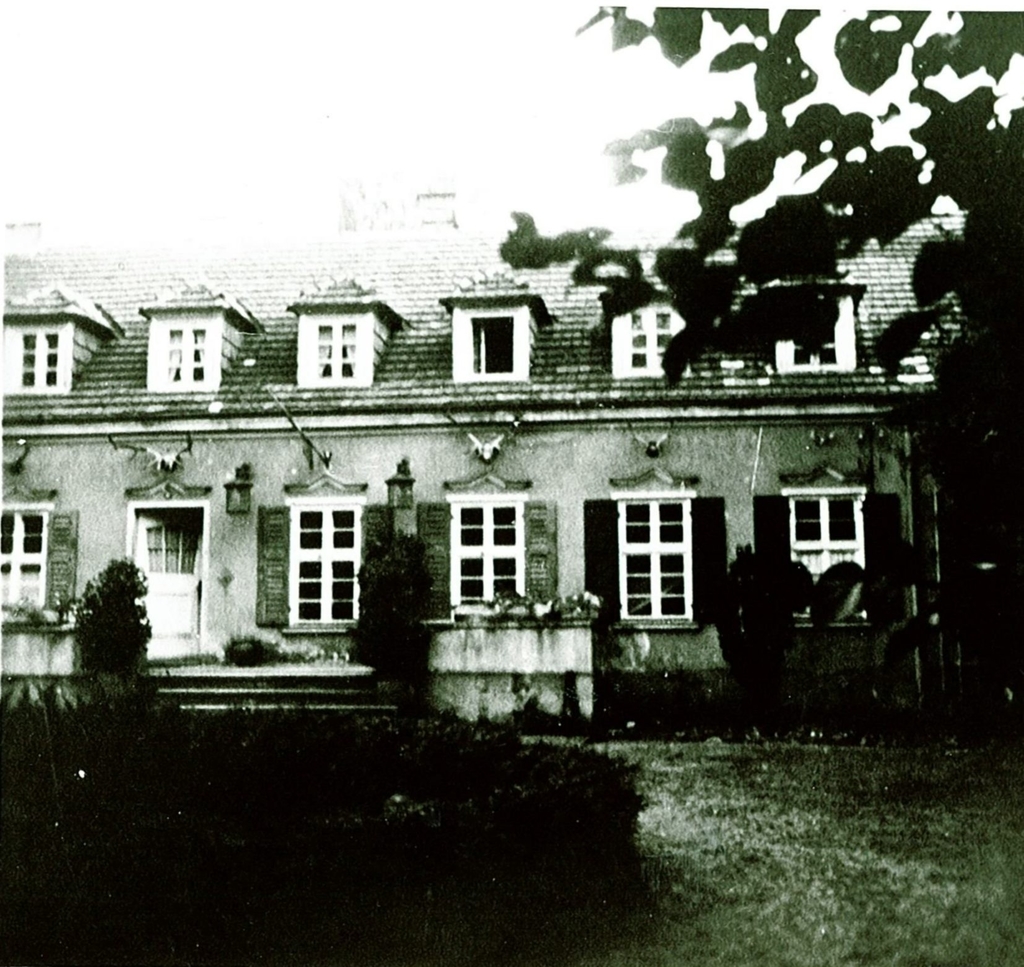
© Archiv Kulturzentrum Rathenow GmbH

© Archiv Kulturzentrum Rathenow GmbH
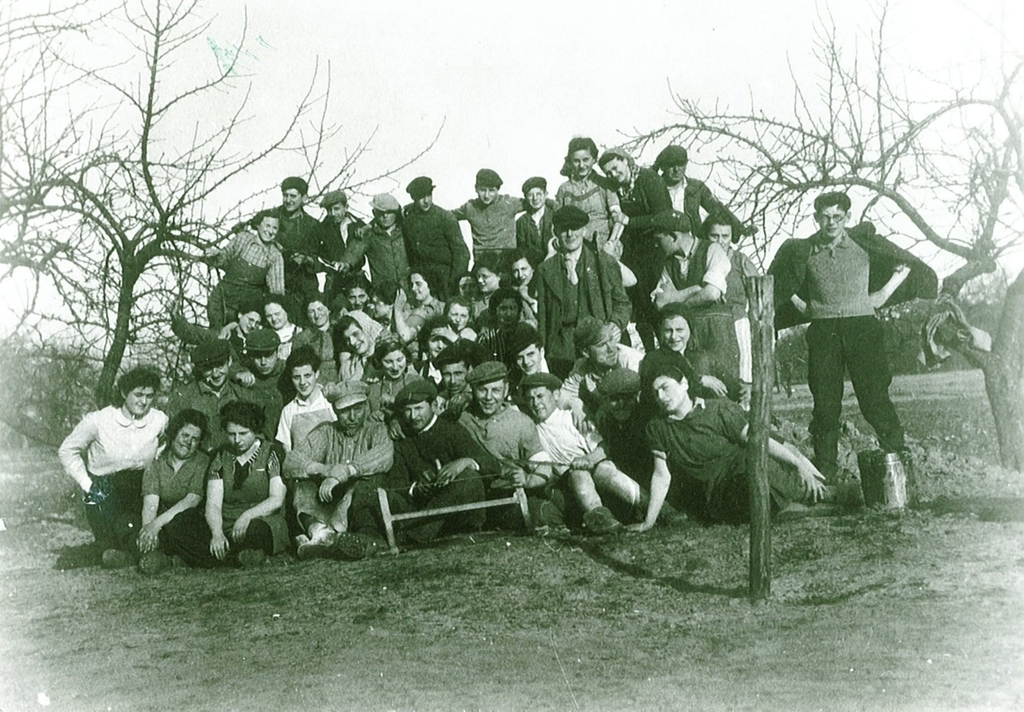
© Archiv Kulturzentrum Rathenow GmbH
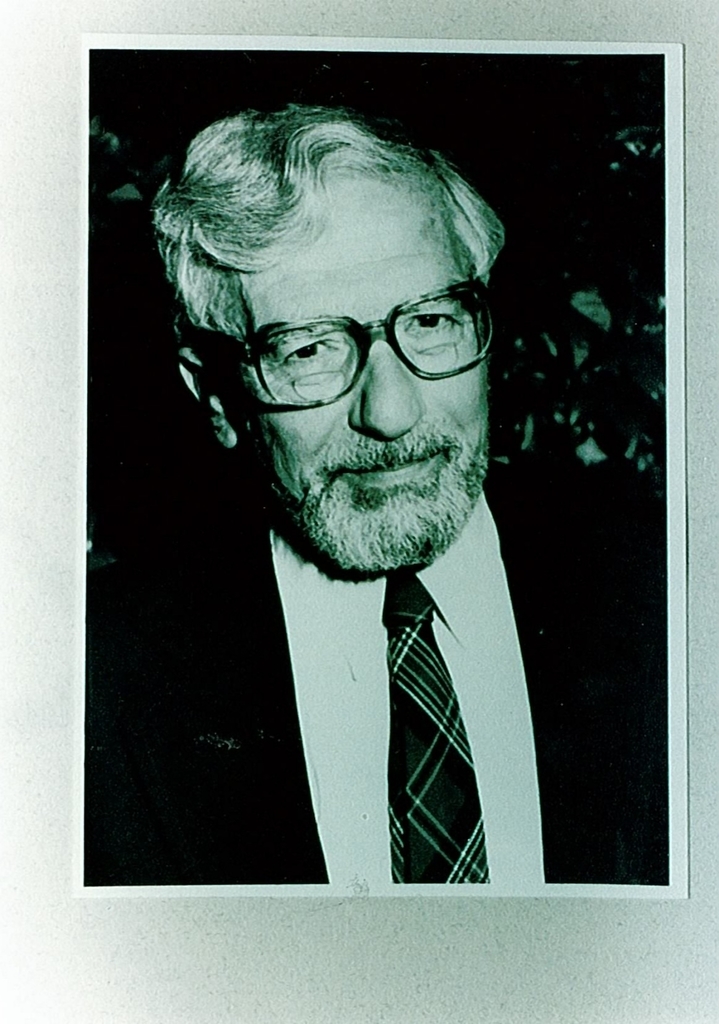
© Archiv Kulturzentrum Rathenow GmbH
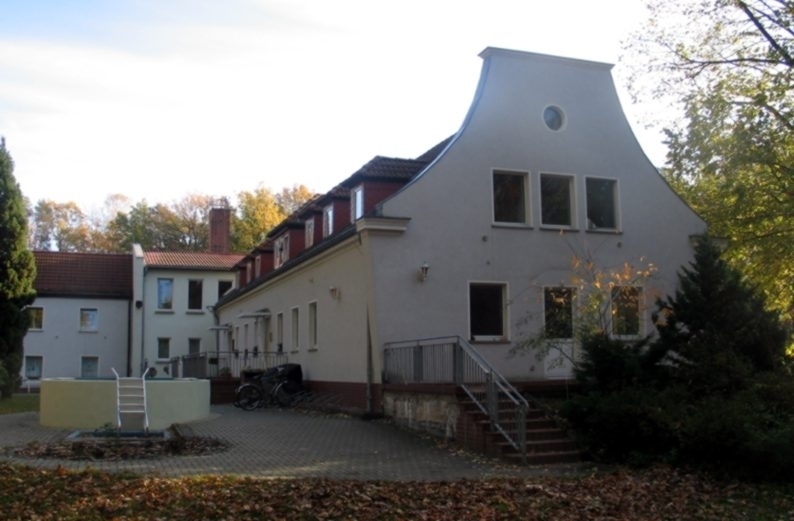
© Archiv Kulturzentrum Rathenow GmbH
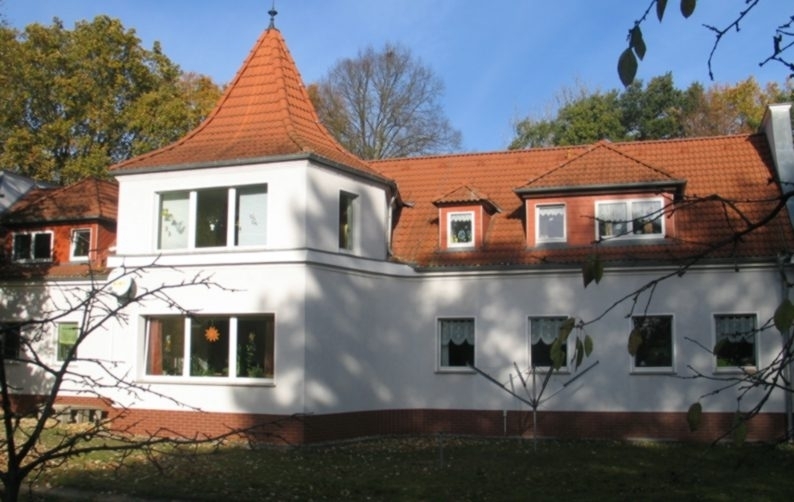
© Archiv Kulturzentrum Rathenow GmbH
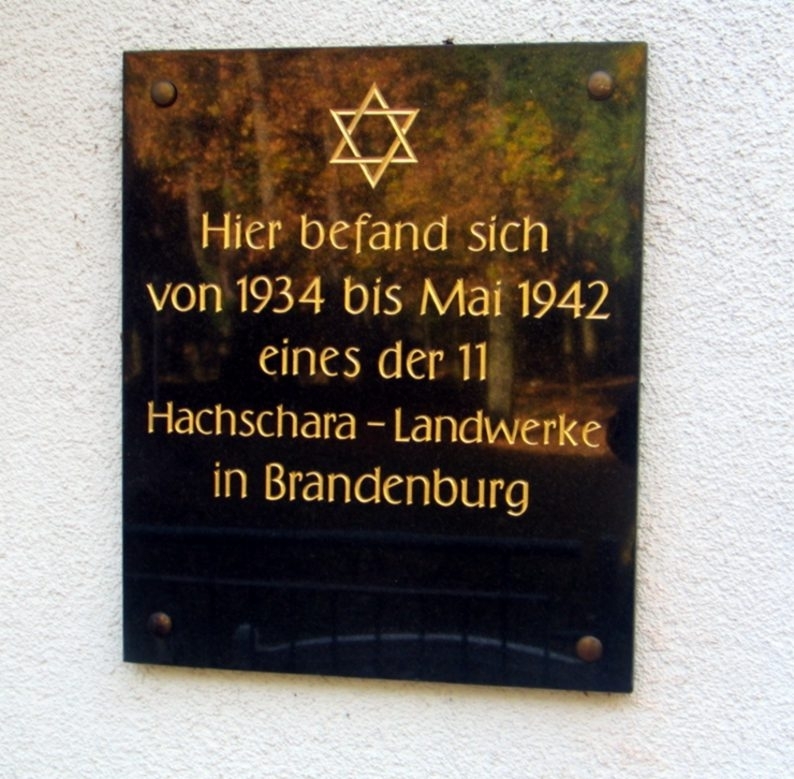
© Archiv Kulturzentrum Rathenow GmbH
- State of Conservation
-
partially preserved
partially structurally modified
- Related Organizations
-
Bachad (sponsor)
- Related Persons
-
Abrahamson, Benjamin (director)Berlinger, Simon (associated)Bromberger, Sigmar (director)Groß, Heinrich (director)Groß, Martha (director)Hofbauer (director)Lippmann, Joachim (associated)Litten, Manfred (director)Litten, Schoschana (director)Löwenthal, Friedrich (employee)Löwenthal, Luise (employee)Meyer, Kurt A. (owner)Perlmann, Michael (director)Schönewald, Herbert (director)Silberpfennig, Kurt (director)Silberpfennig, Rita (employee)Unger, Ariel (director)
- Sources and Notes
-
Brandenburgisches Landeshauptarchiv (BLHA): J.551, Reg.55, Nr. 033.064; Nr.18.450; Nr.25517
LA Magd.-LHA-: Rep. G 11 Devisenstelle Nr. 3209
LA Magd.-LHA-: Rep.C20 I, Ib Nr. 1996 V Blatt 120 - Literature
-
Ezra BenGershôm: David. Aufzeichnungen eines Überlebenden. Berlin: Evangelische Verlagsanstalt 1989.
Bettina Götze: Rathenow, in: Irene Annemarie Diekmann (ed.), Jüdisches Brandenburg. Geschichte und Gegenwart, Beiträge zur Geschichte und Kultur der Juden in Brandenburg, Mecklenburg-Vorpommern, Sachsen-Anhalt, Sachsen und Thuringen. Berlin: VBB, Verlag für Berlin-Brandenburg 2008. pp. 304–328.
Jizchak Schwersenz: Die versteckte Gruppe. Ein jüdischer Lehrer erinnert sich an Deutschland. Berlin: Wichern Verlag 1988.
Michael Wermke: Ein letztes Treffen im August 1941. Kurt Silberpfennig und die Praxis religiös-zionistischer Pädagogik, Jüdische Bildungsgeschichte in Deutschland. Münster: Waxmann 2020.
Recommended Citation
Bettina L. Götze, Landwerk Steckelsdorf-Ausbau, in: Hakhshara as a Place of Remembrance. <https://hachschara.juedische-geschichte-online.net/en/site/13> [January 09, 2026].
Address
Horstenweg 3214712 Rathenow